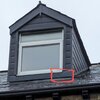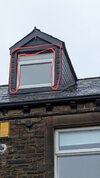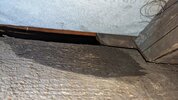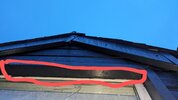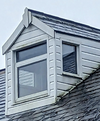- Joined
- 29 Jun 2023
- Messages
- 97
- Reaction score
- 2
- Country

We have just had a roof replacement and the dormer re-cladded, the dormer window itself is original and was not replaced. The roof was finished last week but we have a leak under the dormer window on the right hand side into the loft so water is somehow getting under the cladding, lead and felt. The roofer is coming back tomorrow and has stated that he will be sealing up all the trim as highlighted to hopefully stop any water getting into the trim and down into the loft if this is the culprit. I feel like this is a shortcut but he is saying the cladding is very difficult to remove to look further. The front lead work goes up about half way between the roof and the window sill, no lead window tray, and felt above this and lead soakers on both sides. The window is sealed all the way round into the cladding, including under the window sill, I did the top seal as roofers hadn't done it as I thought they had missed it so wondering if the top of the window should have been left unsealed to let any water that gets into the top trim out again or should all 4 edges be sealed?
Where else could this leak be coming from?
Where else could this leak be coming from?
Attachments
Last edited:

